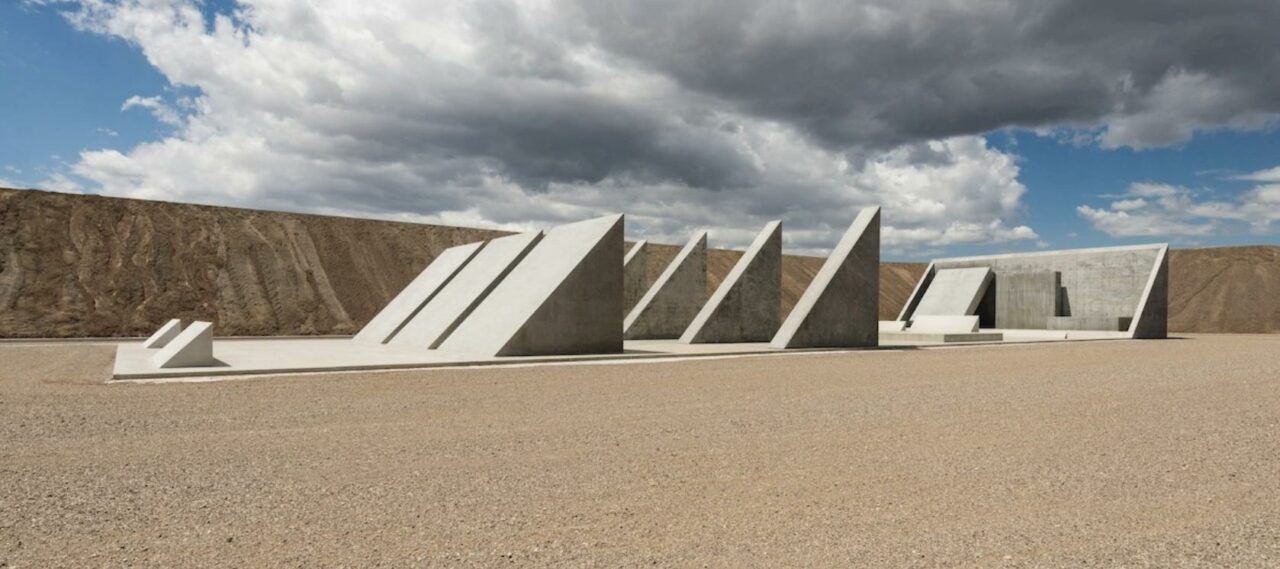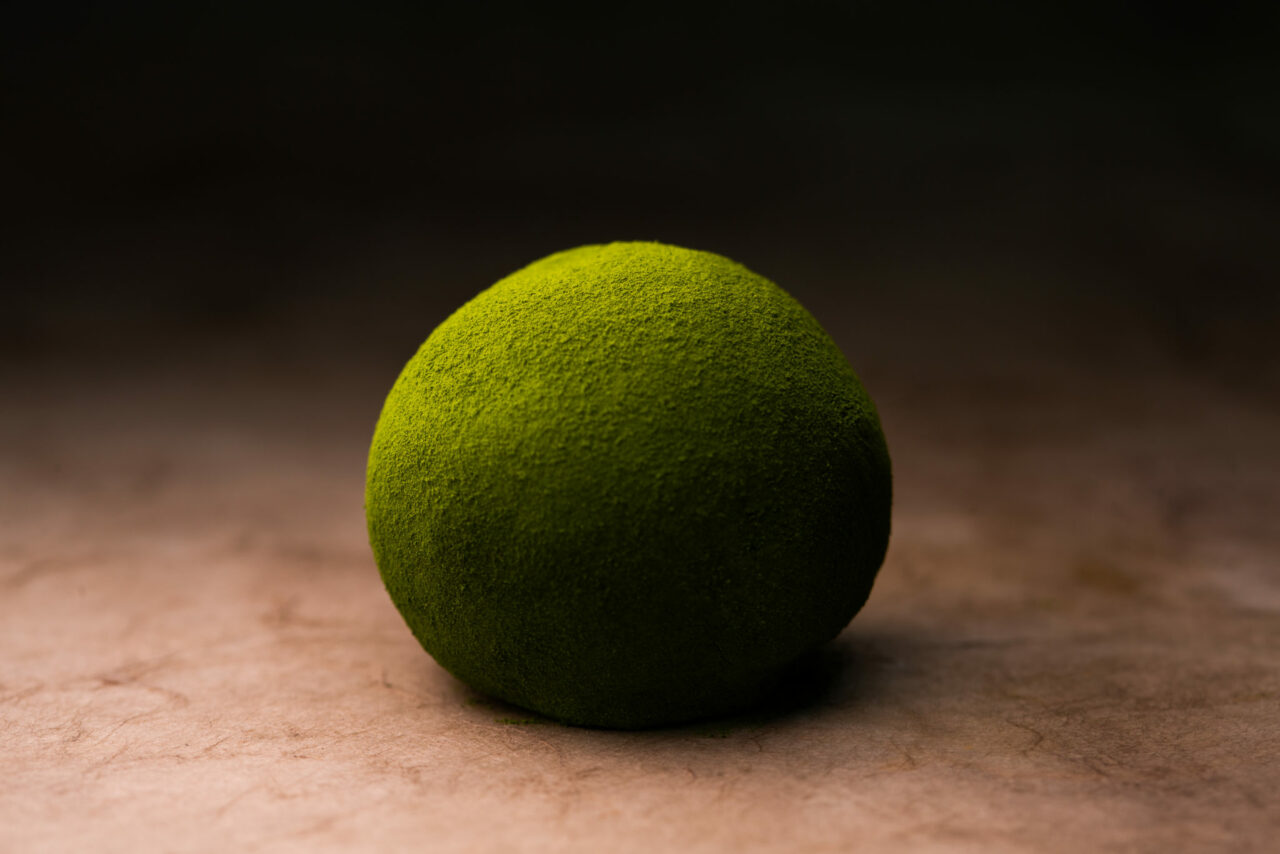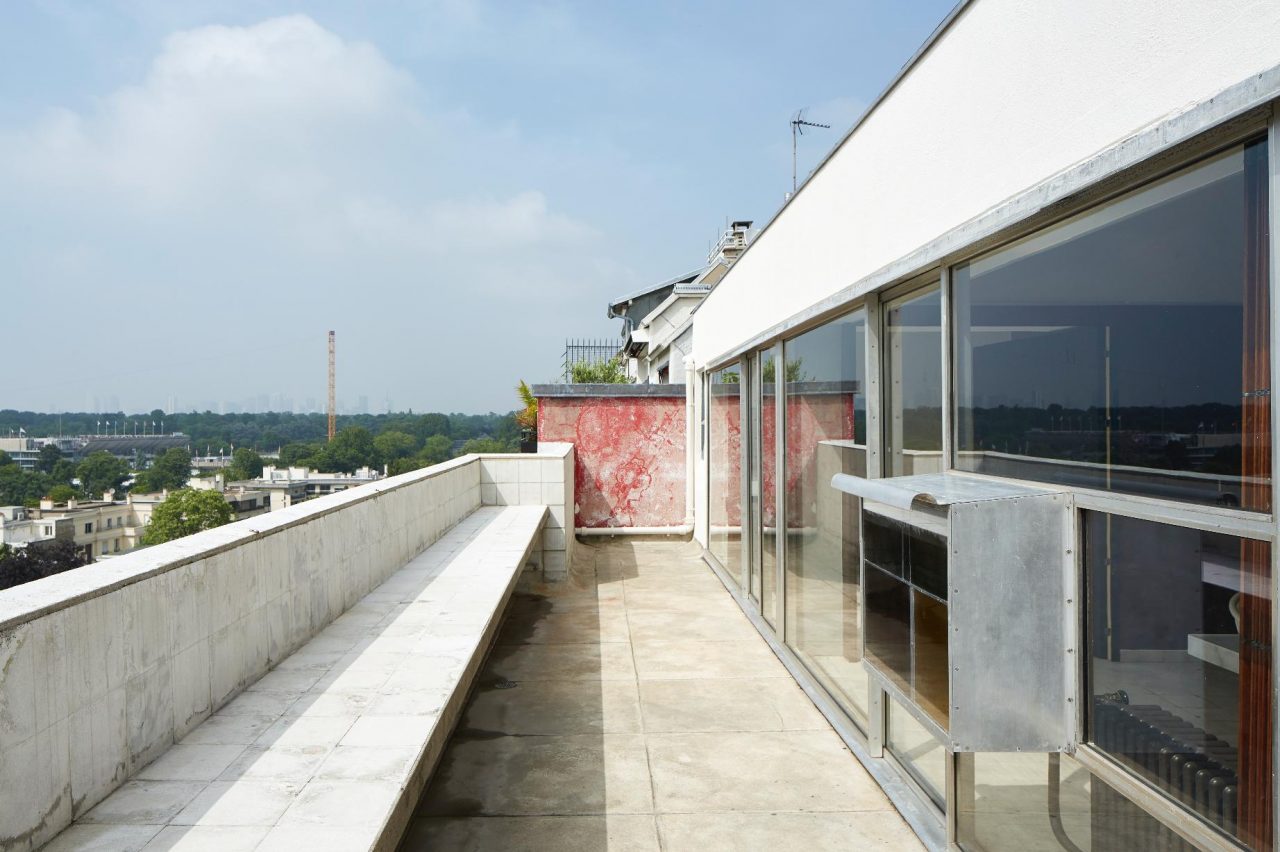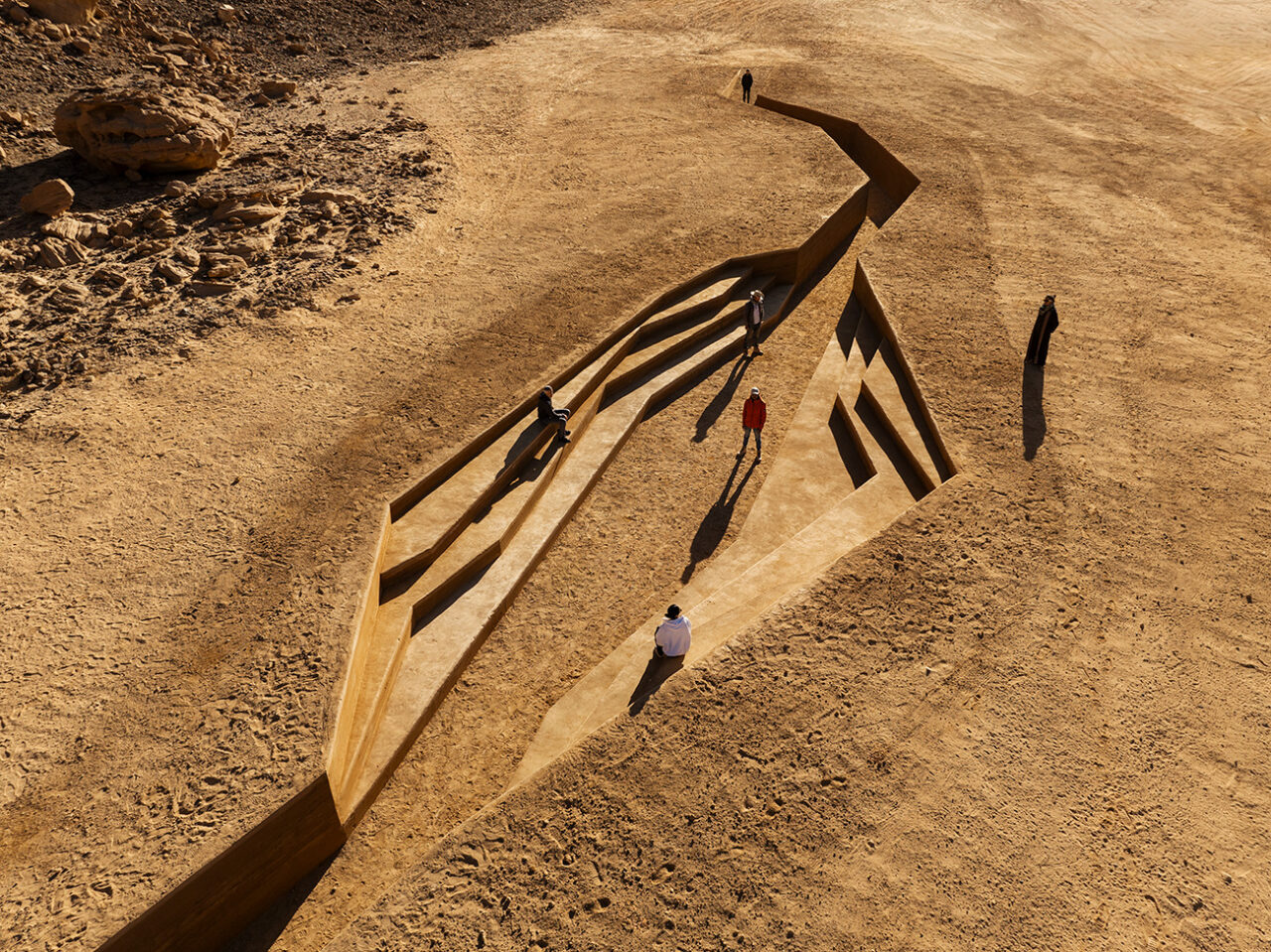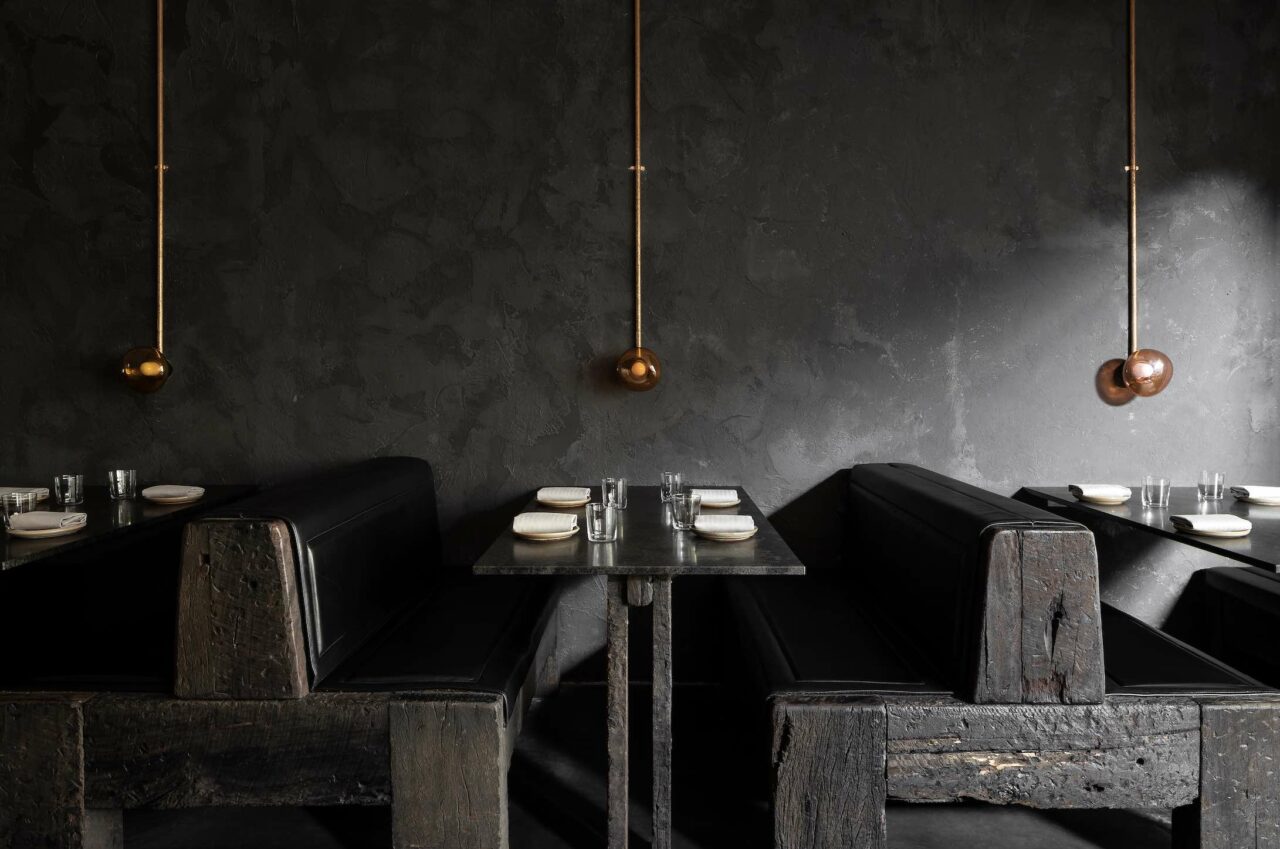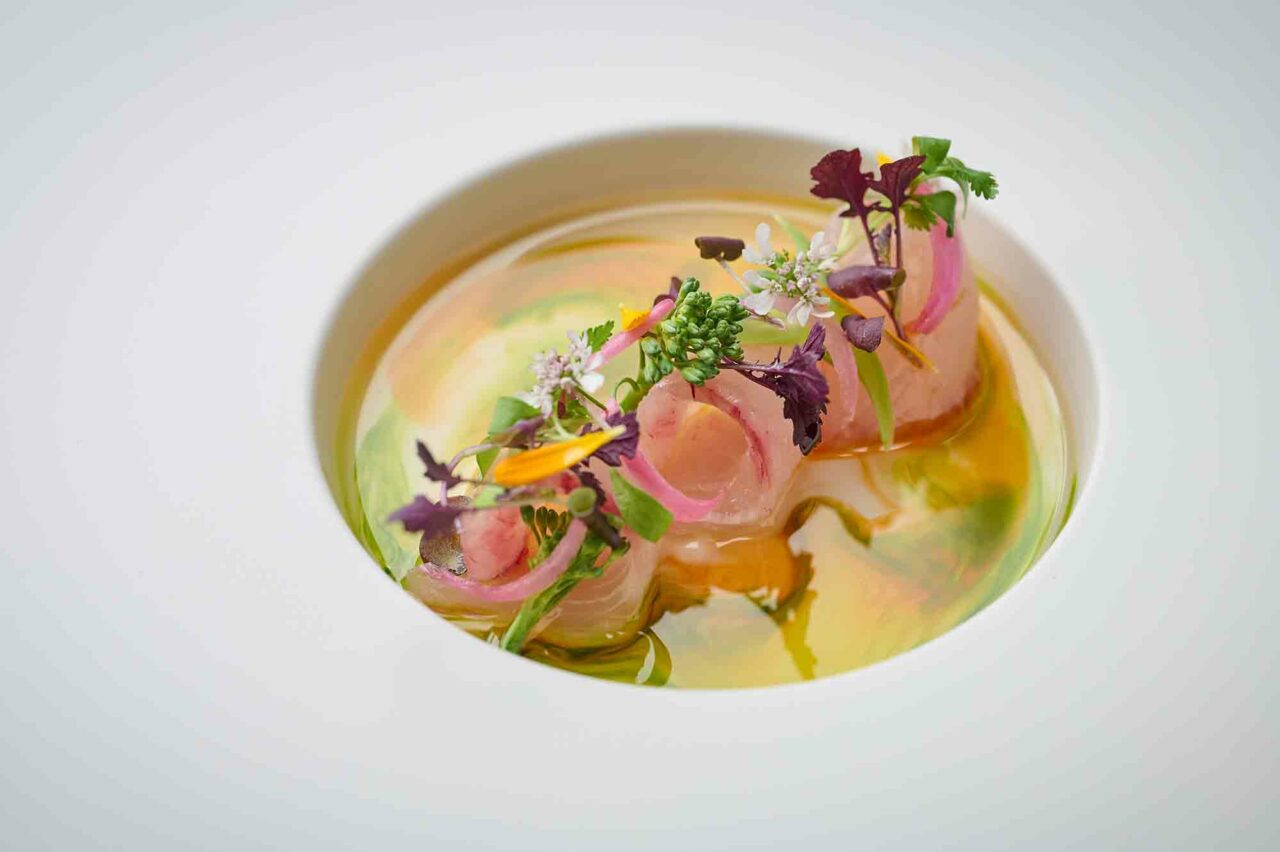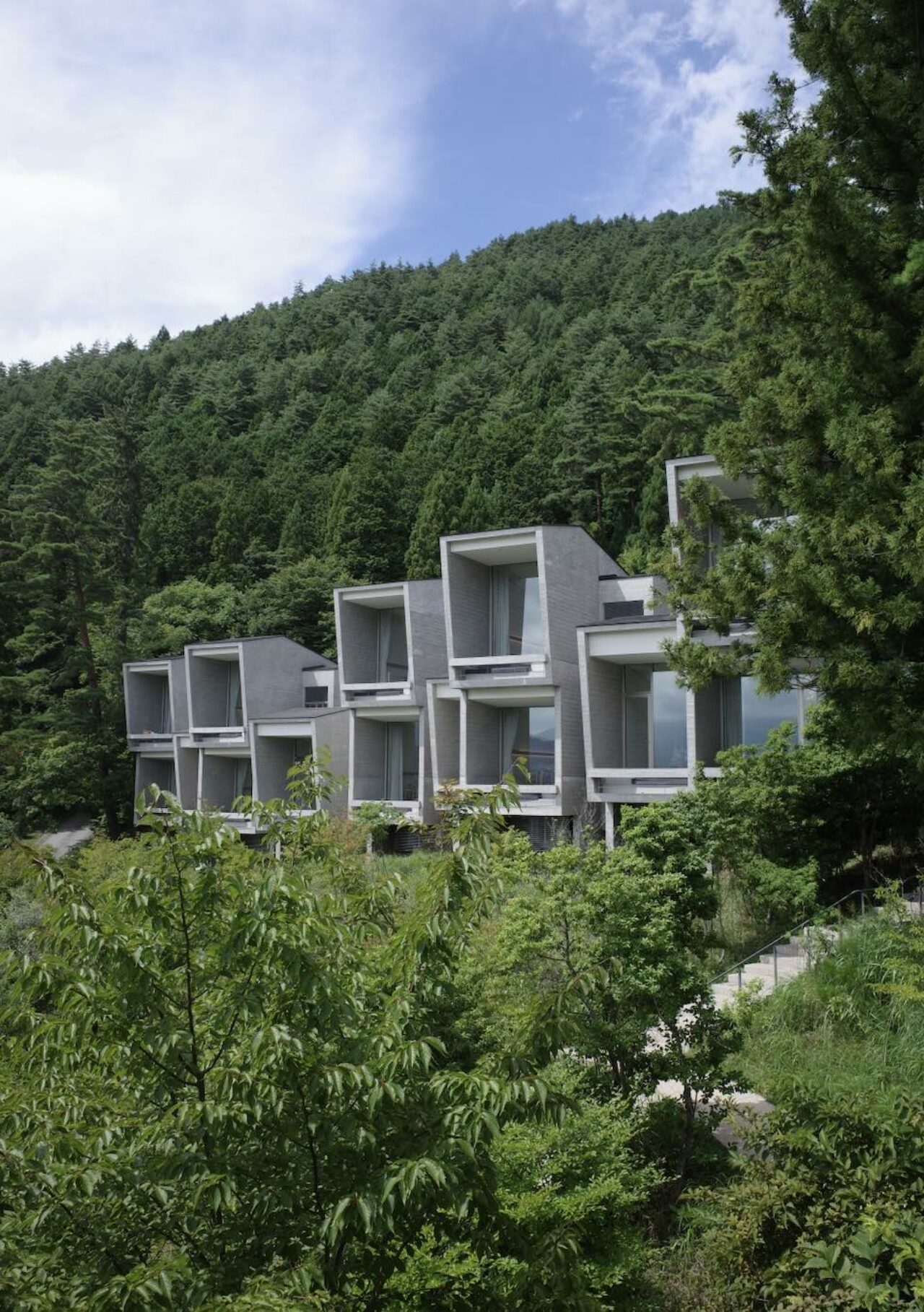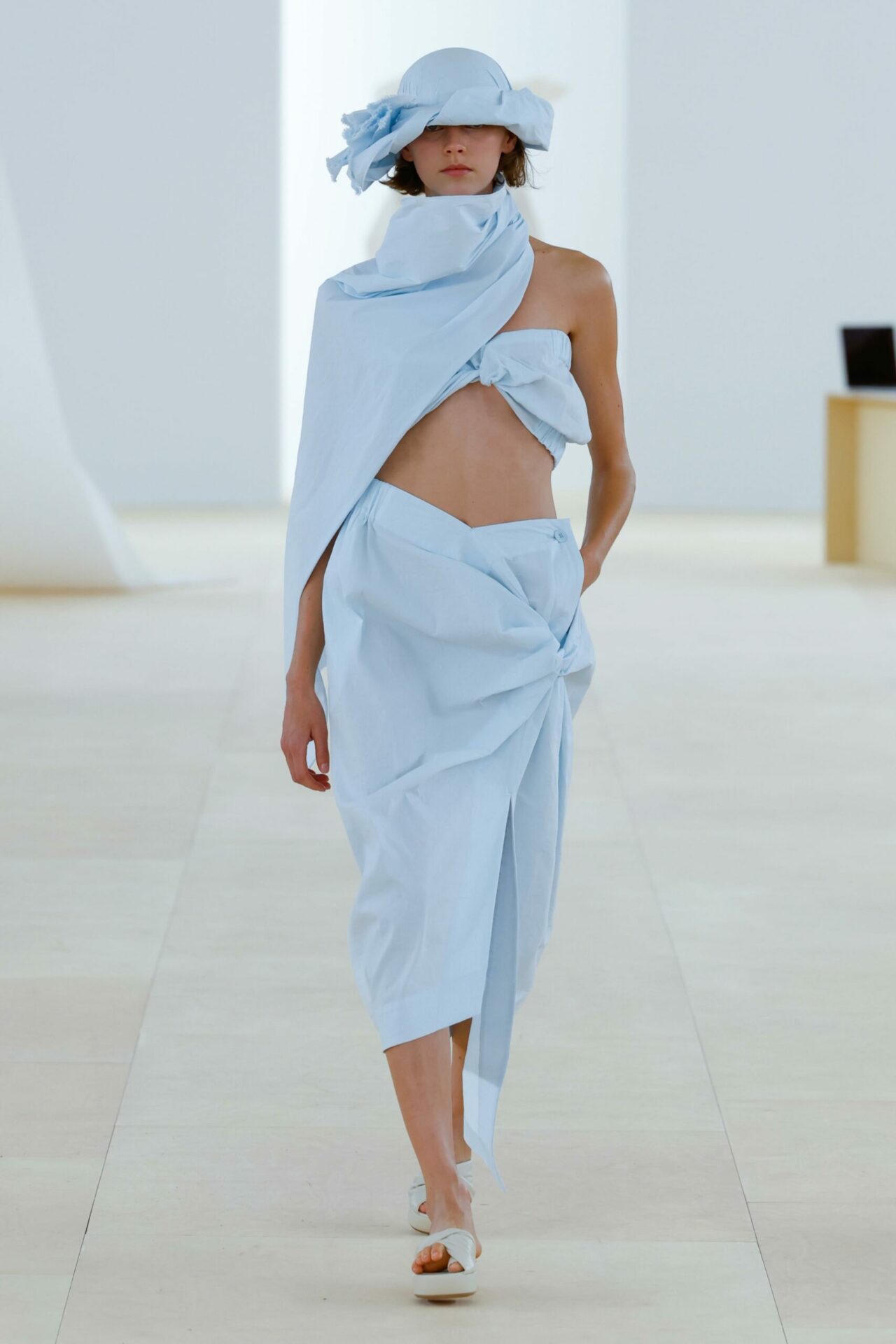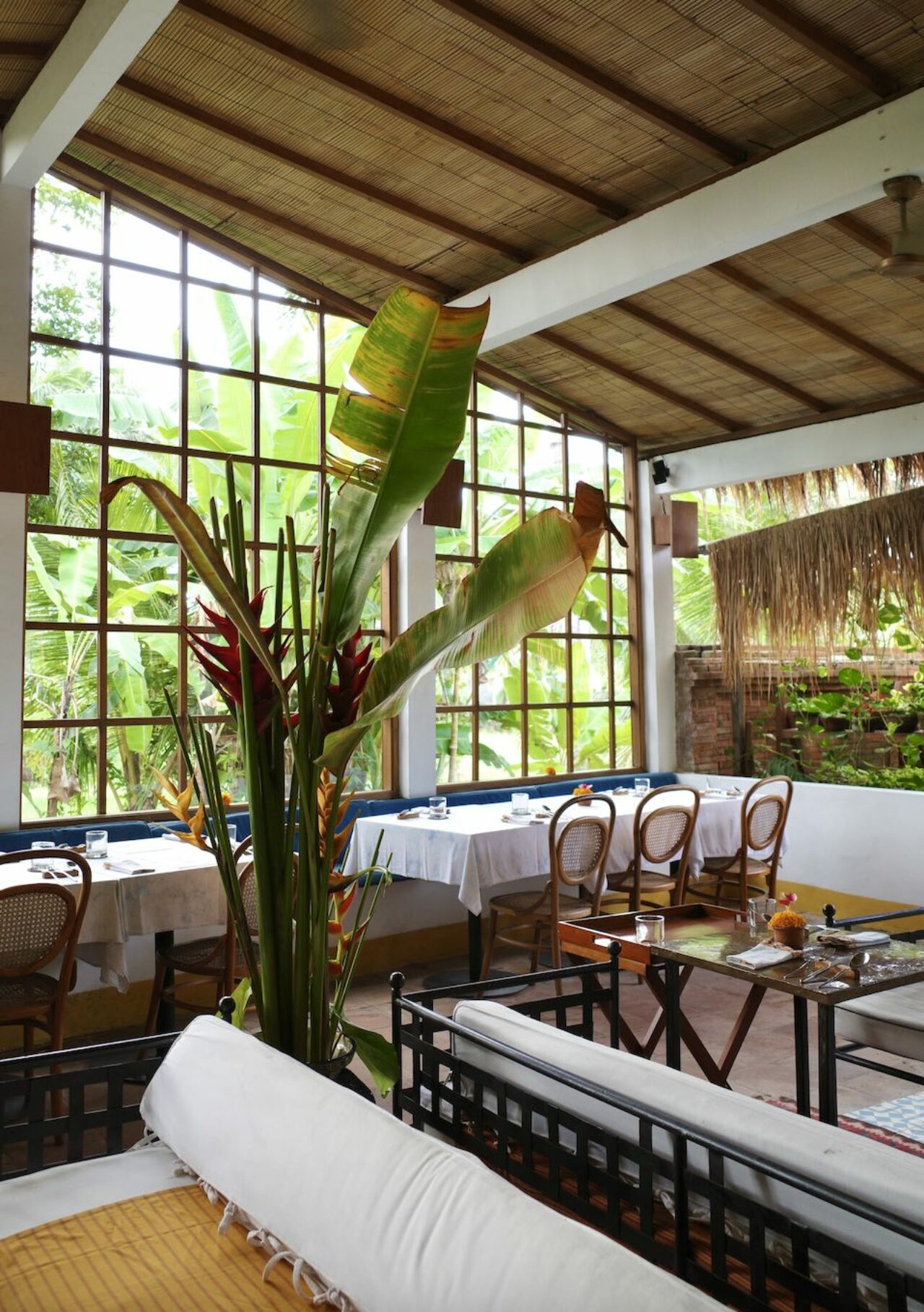TOURNE DE TRANSMISSION
Creative Director & Designer Graeme Gaughan Shows Us Around His North East London Home Studio
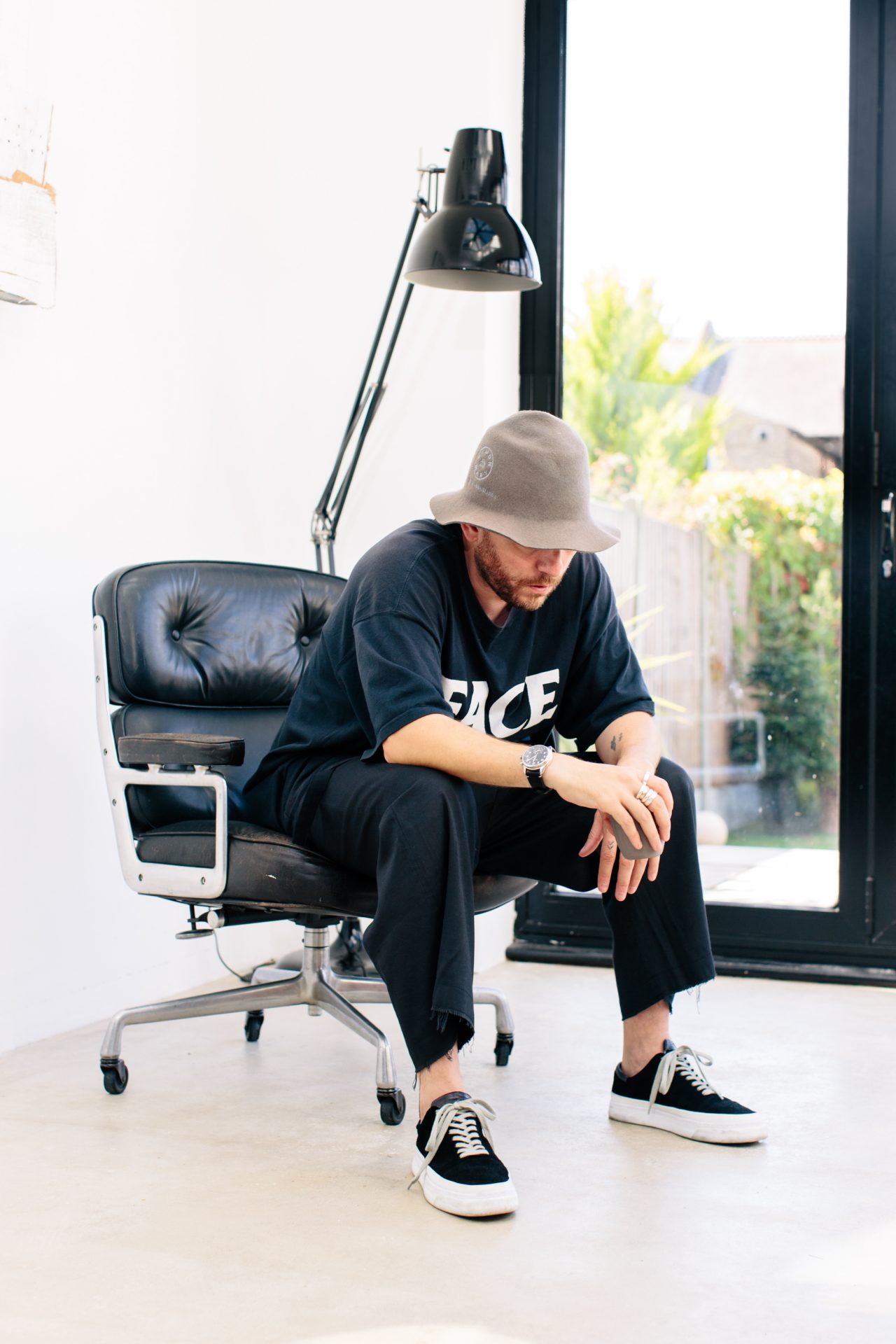
London has always set the bar in the fields of music and fashion, and it has always provided stimulation and meaning to those that contribute to its creative evolution and social progression.
Drawn to the city because of exactly these elements, Graeme Gaughan arrived to London from England’s midlands to learn, participate and contribute to, the hotbed of talent keeping London’s creative energy and output original and alive.
Pursuing a career in music whilst playing in bands and working in a clothing store to make ends meet, Gaughan then went on to Studying ‘Sonic Art and Communications’ as a means to combine his interest in music and how to communicate it in new ways. From here, Gaughan was set up with the means to apply each part of his underlying individual skill set.
As founder, designer and creative director of Tourne de Transmission, Gaughan set up the menswear label in 2012 to visually and physically present his view of the world. In his own words, the brand is “overtly informed by the tension between word and image”, conveying the movements in our current times; highlighting urgent subject matter in a visually-captivating and meaningful way. Tourne de Transmission designs are ahead of the curve, always unintentionally. Before the graphic-heavy garments were taking over menswear, Gaughan had been there, done that and was exploring it further, using abstract terms to convey his opinions for a greater impact through his subtle approach. For his debut runway show, Gaughan was also the first to work with models now fronting major campaigns, a credit to his natural foresight and intuition.
Through the years Tourne de Transmission has grown organically, an attribute which has enabled the brand to keep consistency and its respect within the fast-paced and ever-changing industry of British fashion.
Almost subconsciously, Gaughan has found communications playing a bigger role in his professional life: he is now not only communicating his own creative work but his contemporaries also. Working as a partner at SANE PR, Gaughan’s approach is exactly what is needed from and in the PR profession, still to this day. In what Malcolm Gladwell calls ‘The Law of the Few’, Gaughan carries exactly all three traits: he’s a ‘connector’ by way of his extensive social network, also bringing them together without a specific agenda, he is a ‘maven’ through his few words reaching the many, and a ‘salesman’ by way of his work getting his designs (and those that he communicates at SANE) out into the world and in to customers hands. Undeniably Gaughan’s work creates underlying ripples within the British fashion industry, implementing ideas that make subtle waves over time changing the infrastructure of it all.
In a very transparent interview (typical of the designer’s approach), Gaughan tells us about the current state of fashion from his unique perspective – informed by his work as a designer and his agency work – and his SS16 show which he worked on with the guidance of the late Barry Kamen and the renowned Judy Blame on his AW16 show.
Gaughan’s undercurrent has been steadily growing to greater heights: a sure sign that he’s in it, and will be here, for the long run.

You executed your first runway show during LFWM for your SS18 collection, how did this come about?
I was becoming bored of the presentation set up, the lack of movement, energy and the two-hour time slots. I had always added a show element to the start of the presentation but if someone arrived ten minutes late, they will have missed that energy. I always loved doing the installation-type presentations, and I feel this is something I want to take more into retail areas now (as I started to do in AW16 with Harvey Nichols). I have also always wanted products and looks to stand alone, and not be distracted from other elements. To have a super clean environment and the focus on the product. Through this, I spoke to contemporaries within the industry whom I trusted to gauge opinions from, and then I spoke to the BFC who also felt it was a good idea. For the LFWM schedule, I applied for the runway show expecting to get a tough slot with it being my first show, then ended up getting offered the opening slot.
The Tourne de Transmission SS18 runway show was the first show on the LFWM schedule, and it was the morning after the UK election. Can you tell us more about the mood of your guests and journalists at the show, and how this unexpectedly also tied in with your SS18 collection?
It was interesting for sure… I could see there were a lot of tired eyes backstage and also after the show, tired looks amongst press and buyers. Some people had got mashed the night before, and some had just stayed up to watch the results. It felt like there was a definite reaction and heightened interest on this election via how the Brexit vote had gone. Younger generations were not going to be AWOL on this one; we wanted to make our voices and opinions count. There was a slightly buoyant mood that while the Tory’s won, we had dealt a blow to their machine and stopped them getting the majority they needed to steam-roll over everyone. Of course a lot of my work with the label has always contained social or political commentary, but over the last year this has been quite focused on the state of politics in the UK right now. I am trying not to dwell on these areas – as I am sure I am not the only one who is tired of hearing how our bumbling governments attempt to make this work, and through this are dragging out and backfiring.
With regard to opening the schedule, I was pretty intimidated at first, and only approached it with further thought. There are different pressures attached to showing first, but also lots of benefits if you go about it in the right way. The more I thought about it, the more I felt it was also a vote of confidence from the BFC and the Menswear panel/committee.
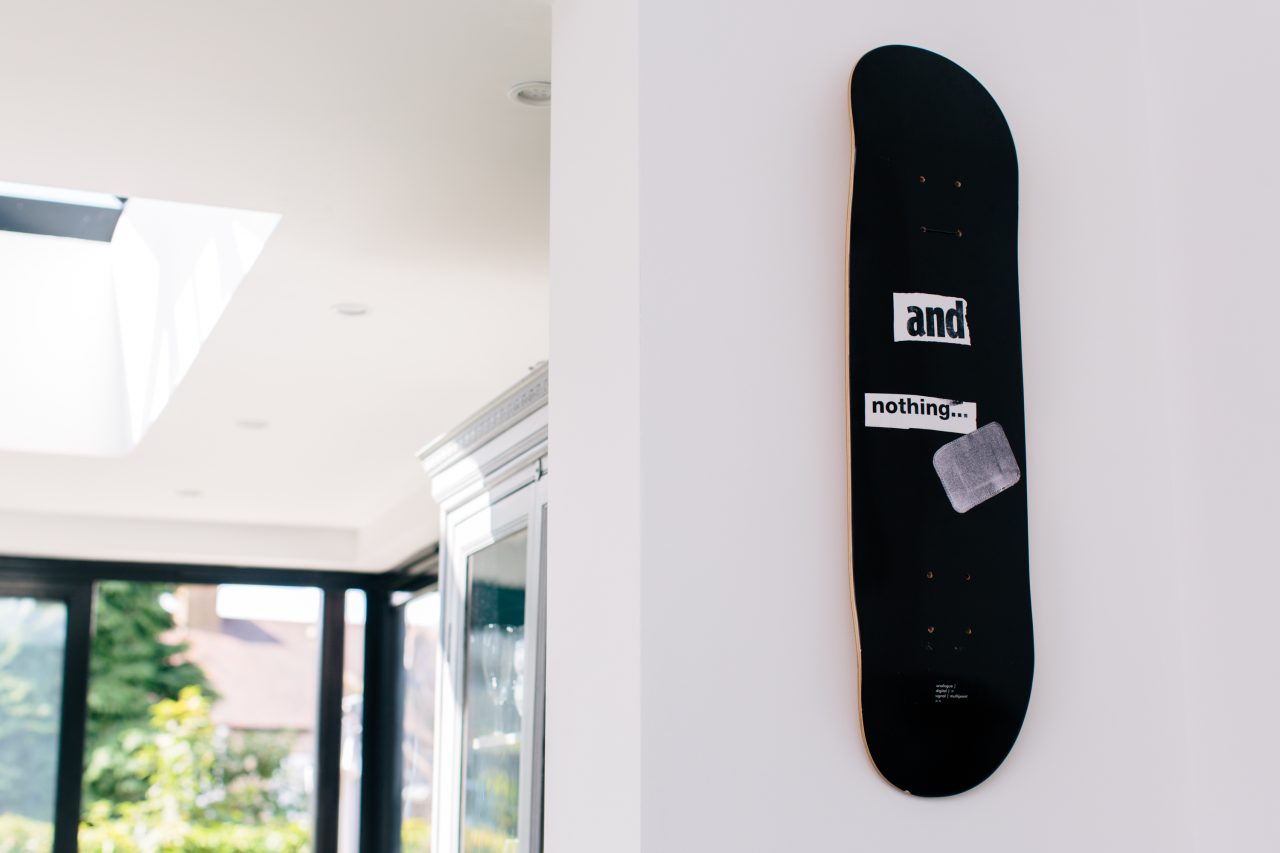
Can you tell us more about your first runway show experience: what did you expect, learn and what were the challenges?
I learnt it costs more! (Laughs). Overall the process is pretty similar to what I had been doing previously. Not doing installations or heavy art direction in the space did help to keep me more focused on the product and the looks this season.
The BFC main show venue was a big space, and that in itself was a new experience for me – it fitted 600 people and we managed to fill it. In addition it was a bigger space than a lot of Paris shows which I feel is perhaps overkill for LFWM, but I think they are looking at that for next season. Working with the large space, I was able to think about the movement of the looks and the music a lot more which I really enjoyed.
Will you continue the runway show format for future seasons? Is there no going back now?
Yes, I think for the next couple of seasons we will at least [continue the runway show format], but I don’t think there is no going back from doing shows. Ultimately it will be about what I think feels right at that time. I am not opposed to showing in other countries for example for one off situations: Tokyo perhaps, as it is a strong market for the label. For me it is going to be a case of whether I feel I have exhausted my interest in showing, and if so, I will stop. Simple as that. There are definitely other ways to use that budget effectively.
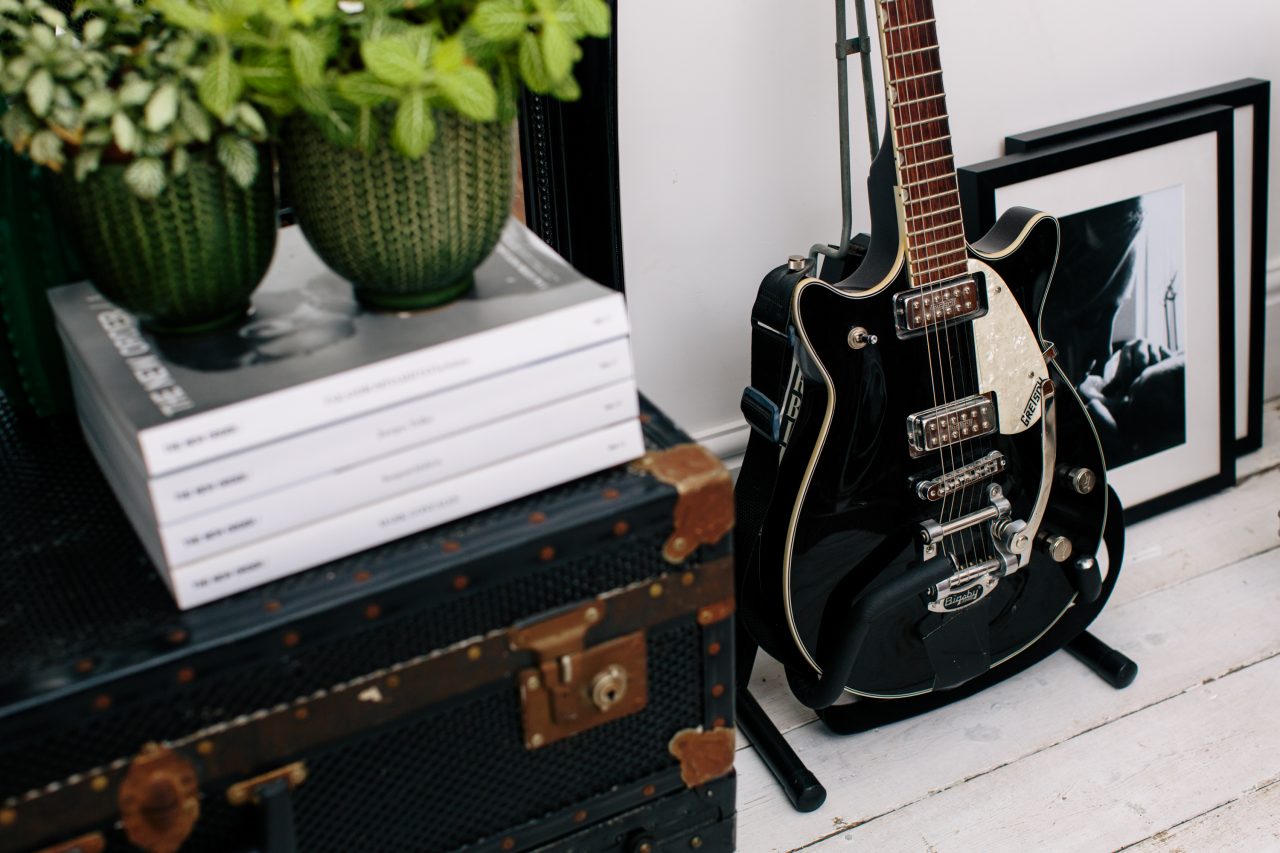
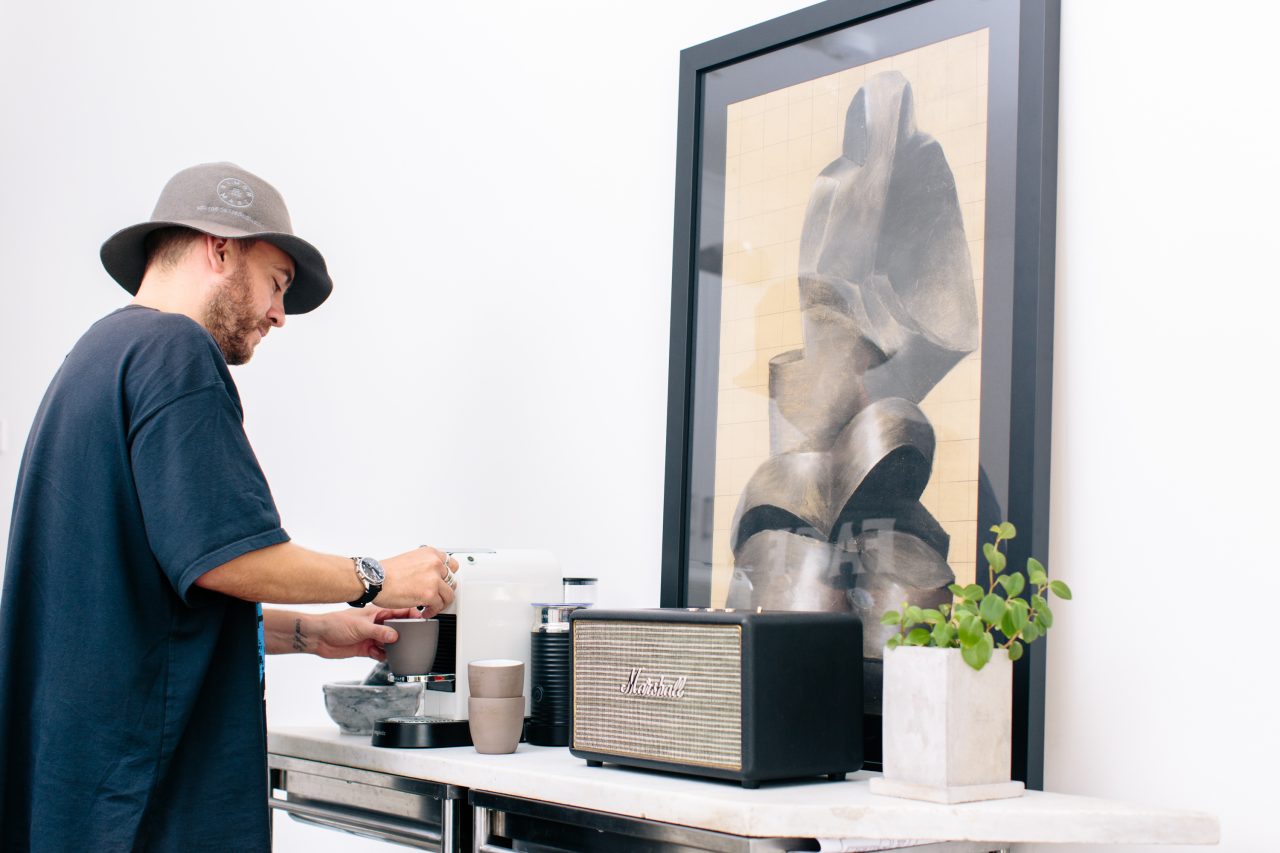
What are your personal thoughts on LFWM? It has been said that it may not continue for much longer.
There has been word in the industry that it might not continue for much longer, and I have heard that for like 3 years now though, so perhaps this is a bit of a typically British thing to do – to down-talk your own thing. I’ve overheard buyers talk LFWM down and say there is not much to look at, when I know they are buying at least 5 or more brands on the schedule. Which doesn’t sound like a lot but if you discount the big established houses from the Paris schedule for example, there is a similar ratio of emerging brands shows that they will go to and buy from.
Honestly tell me where you would find all of the labels that show in London on other schedules? It would be very difficult to find space for everyone if we all decided to go elsewhere; which would be a huge step backwards I feel. Perhaps we should be looking at what we can do to bring something to the schedule and make it better instead of moaning about it. There are for sure areas that we can improve LFWM – I agree there – and we have lost a lot of big brands that have left the schedule, but I think there is also other reasons for that, and it’s easy for them to say it’s LFWM that is at fault. It’s not as if all of these brands then popped up in Milan or Paris on the schedule, so some [have] either stopped showing, created only look-books or merged their collections. There is definitely some cost-saving going on across the board at certain bigger houses. I truly believe that a lot of creativity comes out of London and LFWM. We may not have the most commercially viable schedule but what we lack in accessibility to more commercial consumers, we make up for in pushing ideas and concepts and our ability to punch above our weight as brands.
Do you think the current pace of the fashion industry is speeding up or just becoming over-saturated? Still dictated by the seasonal structure, would you agree that a wave of non-seasonal and more immediate fashion production is coming up? Where do you see Tourne de Transmission’s approach relating to both topics?
This is something we talk a lot about in the studio and also at SANE. I would agree things have sped up to a degree, but I also think that there are blurred lines between having a large Instagram following and creativity. Not that I am cussing anyone for doing T-shirts for example – after all it’s how I started – but there definitely seems to be some degree of question as to if a connection between the amount of followers vs good ideas is enough to warrant your place in the market.
Personally I am filling in the gaps in the season with projects I like to do in order to retain a degree of visibility. It could be installations with retailers or capsules with photographers like Chris Floyd who has an amazing archive of images from the 90’s – which we will be doing very soon. I would agree there is an element of over-saturation brought upon us via the speed of the internet and consistent need to shout louder. As Steve – my partner at SANE – always says, “it’s better to talk quietly with confidence, than to shout at the top of your lungs hoping someone will hear you”.
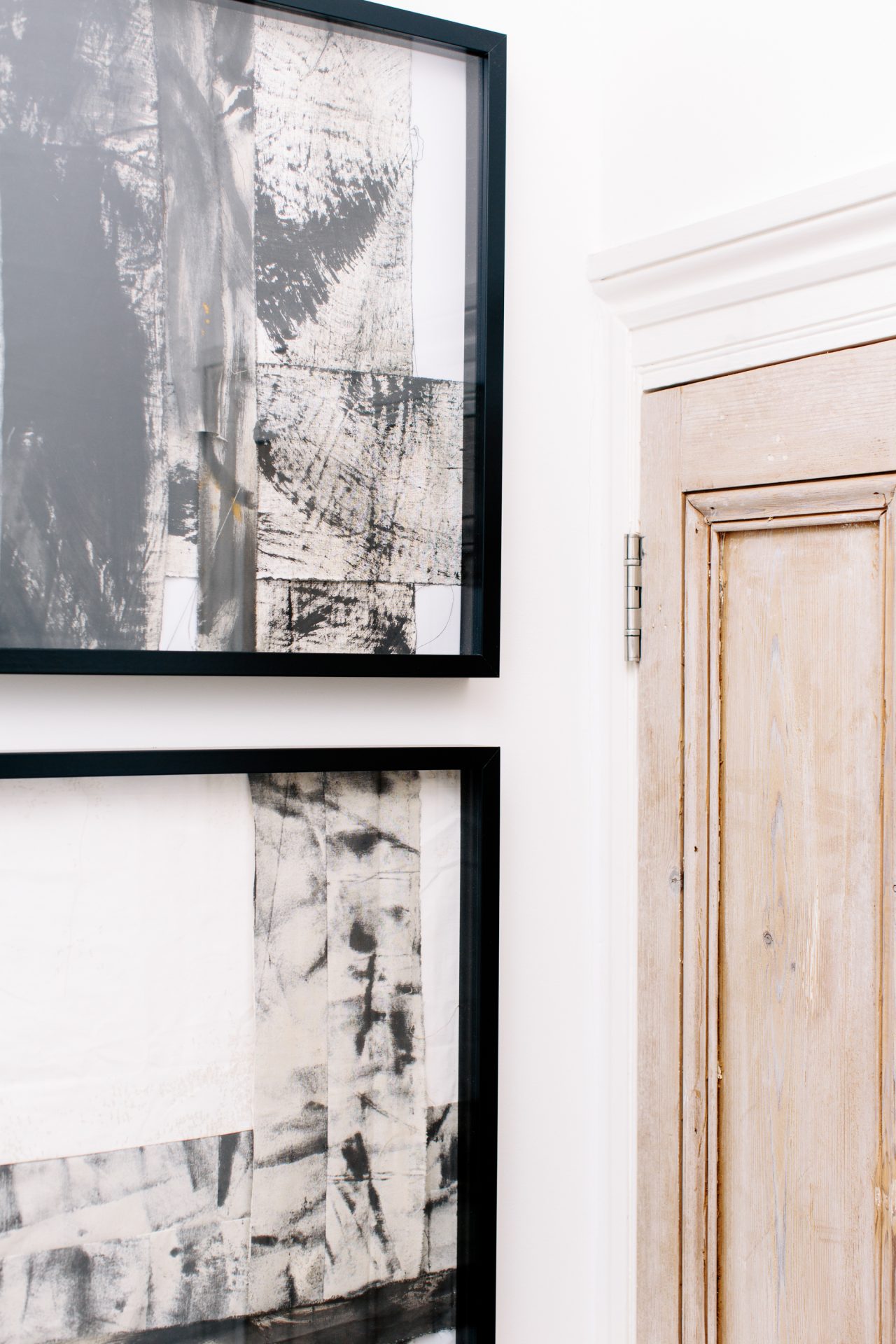
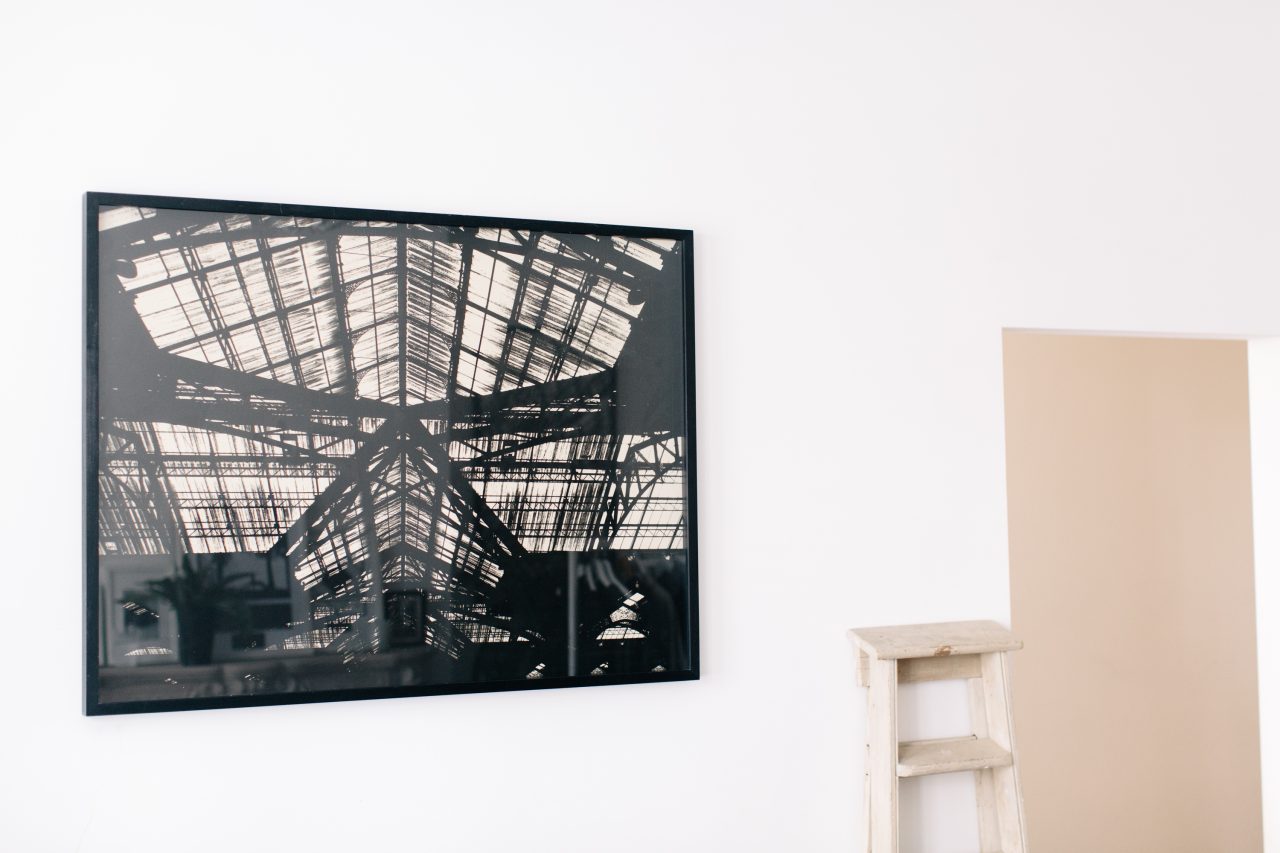
You have a new partner at Tourne de Transmission, enabling the brand to grow and evolve at a faster pace. Can you tell us more about your partner, and how this came about?
My partner is Mr Chris Leacock – some people will know him as Jillionaire from a band called Major Lazer. We had been in touch via a mutual friend and he had been wearing the brand with Diplo at various points. We linked up for lunch one day and got chatting. I was telling him my ideas on how I wanted the label and other sub-brands to develop and that was that. Then about two months later he emails me out the blue and says “hey, I’m feeling the vibe, so how can I help you here?”. My view to business is that it’s better to share a percentage of something that’s going somewhere, than have 100% of something that’s not.
I was growing tired of the struggle to balance my ideas against the budgets available. I don’t like to compromise in these areas or have to look for sponsorship at every turn to carry on, so once we worked out how best we could work together, we made it happen. Chris understands the brand and my vision. I also started out in music and actually studied Sonic Art and Music Production, so we have some cross-over areas of interests and knowledge which enabled us to understand each other easier. He is a smart guy and has a lot of projects on the go – I like that kind of hustle. He knows that creativity comes first and it’s a long road ahead, which is key.
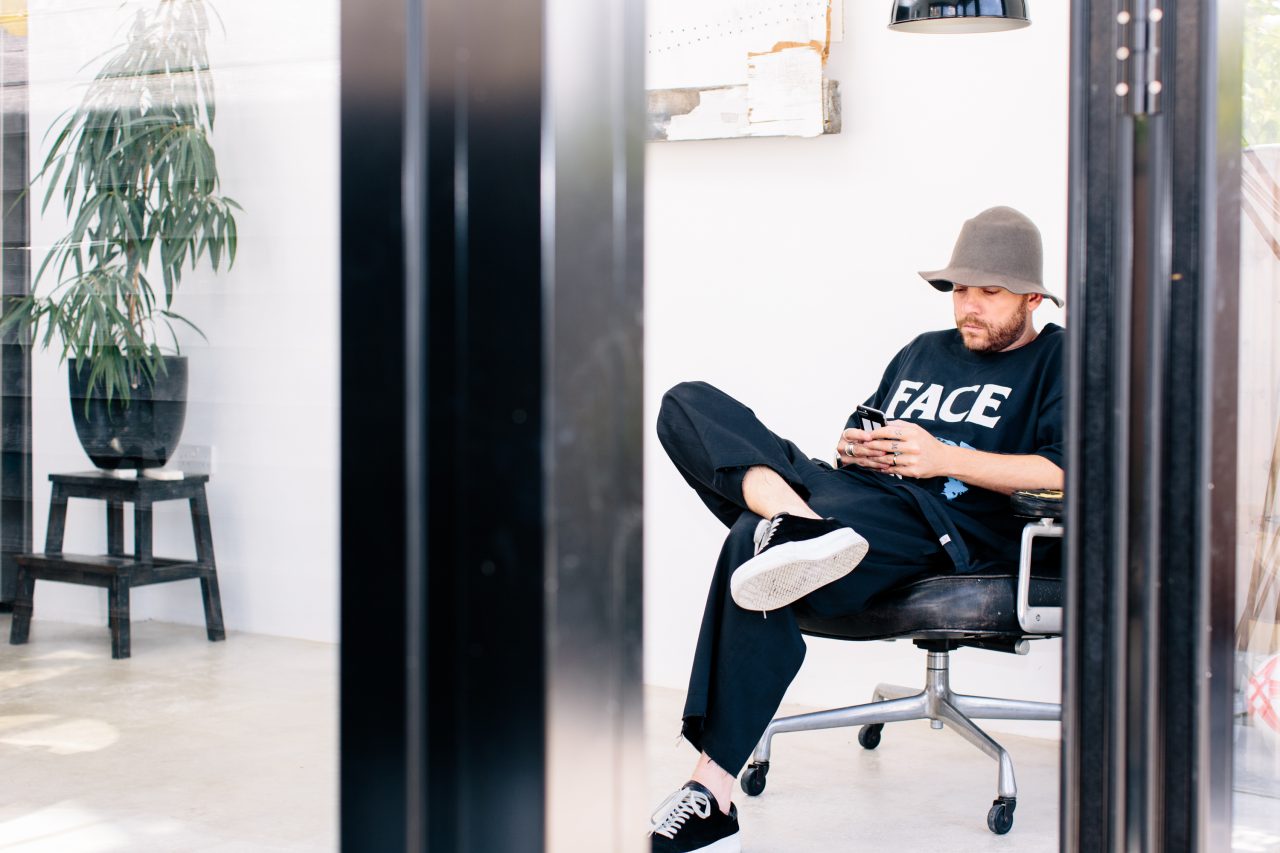

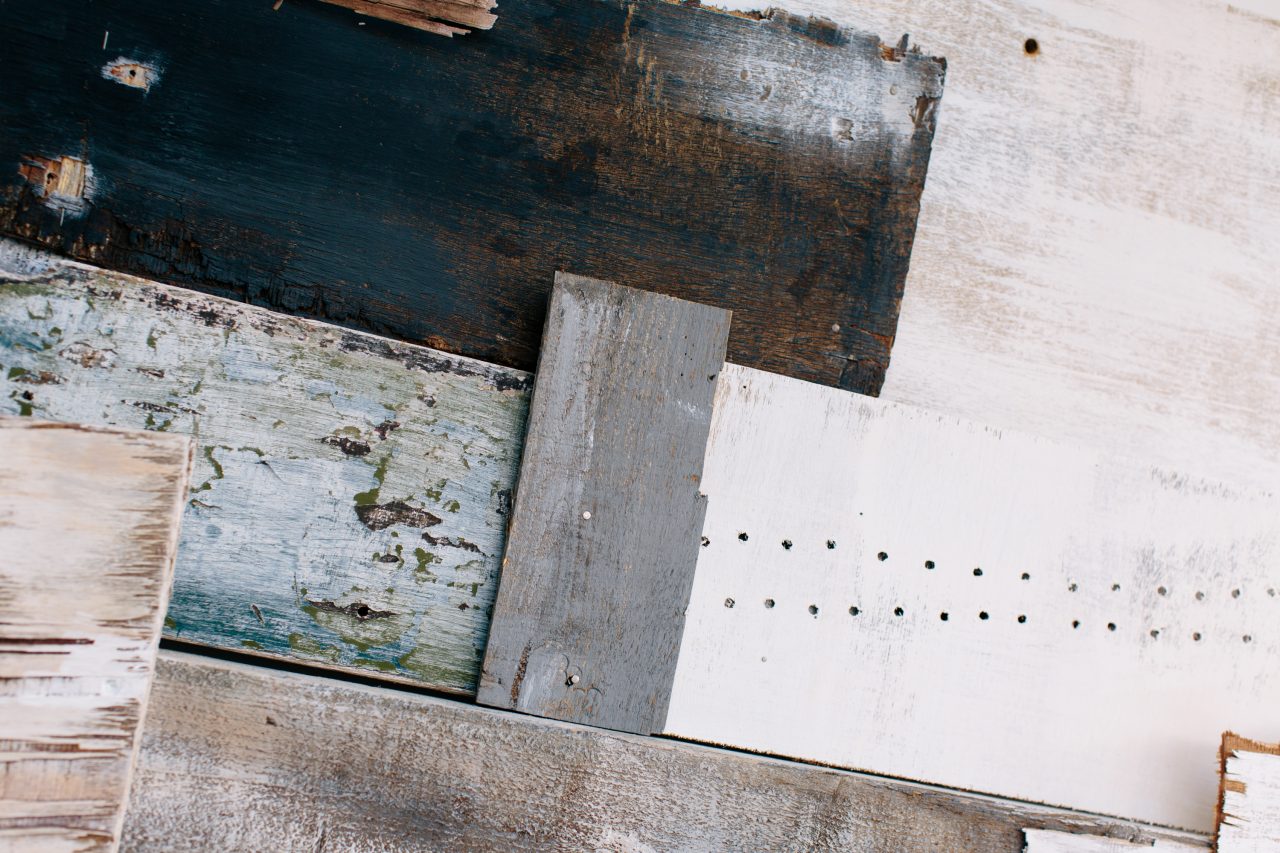
You collaborate closely with artists, in particular one whose works you have in your home. Can you tell us more?
Like many designers or creatives, I like to work with people that inspire me, and whom there can be an exchange of ideas regardless of the outcome. I had a special relationship with Barry Kamen though, he for me was such a true multi-disciplinary artist.
Barry was more of a mentor to me, and I miss his calm aura and guidance all the time. He was a special person and had so much knowledge to share. I actually don’t have any of his work at home and I kick myself everyday that i didn’t take him up on his offer of taking one of his pieces for my kids. He was always on at me to come over and grab something, and then he suddenly passed from a heart attack and that was that. I really loved his work and and spending time with him in his studio, every corner of his space was an inspiration in so many ways. Indirectly via Barry and Elgar Johnson I was lucky enough to work with Judy Blame on my AW16 presentation – which was a huge honour. He was a friend of Barry’s of course from way back, and it was amazing and so nice of him to get involved at a point where I really needed that voice. His work is next level…
Some of the pieces of work I have at home are actually from projects I have worked on with artists like Johnny Brophy. We have worked a lot together on shows, and he never fails to bring something amazing to the table. He works a lot with reclaimed materials and textiles so we have a natural synergy. Chris Dorland is another artist that really inspires me right now, and the conversations we had really brought a lot of input on the SS17 collection.
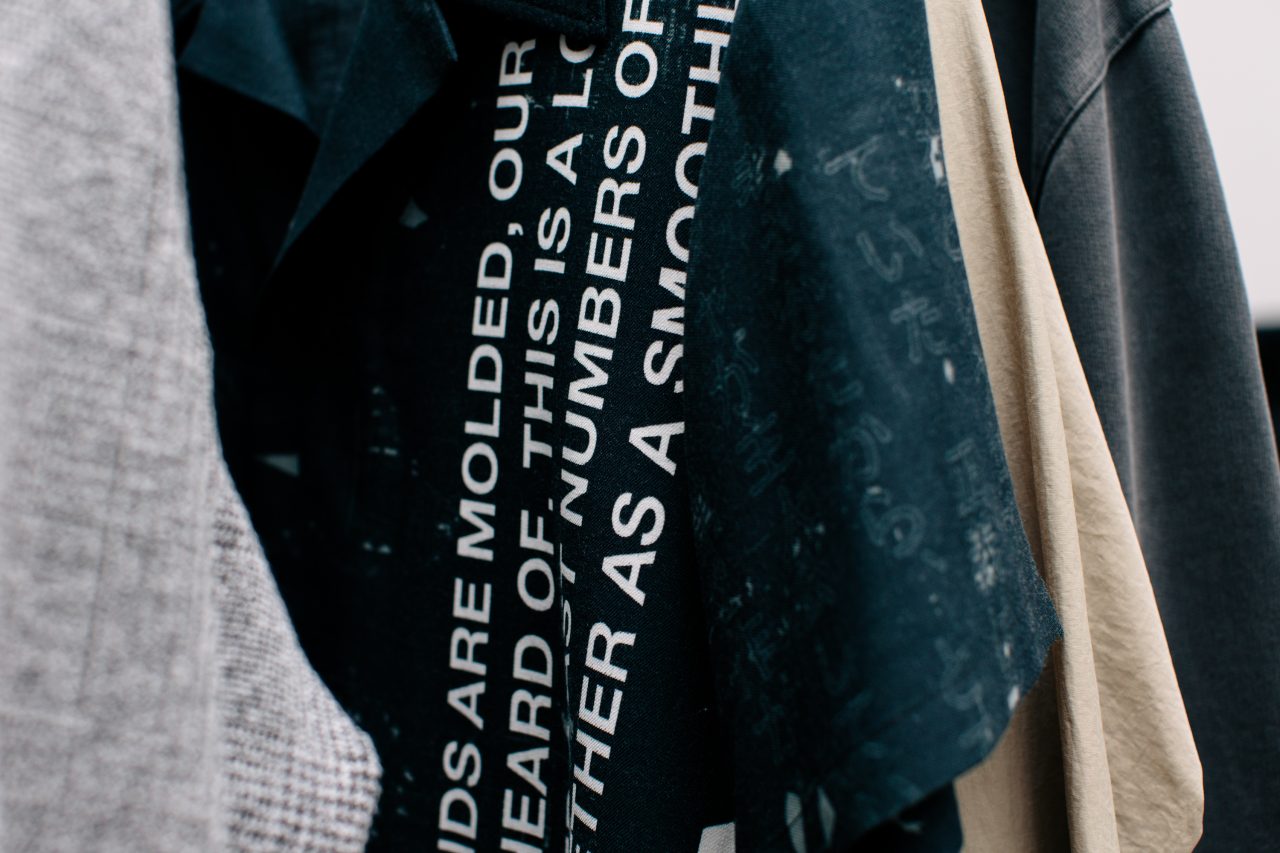
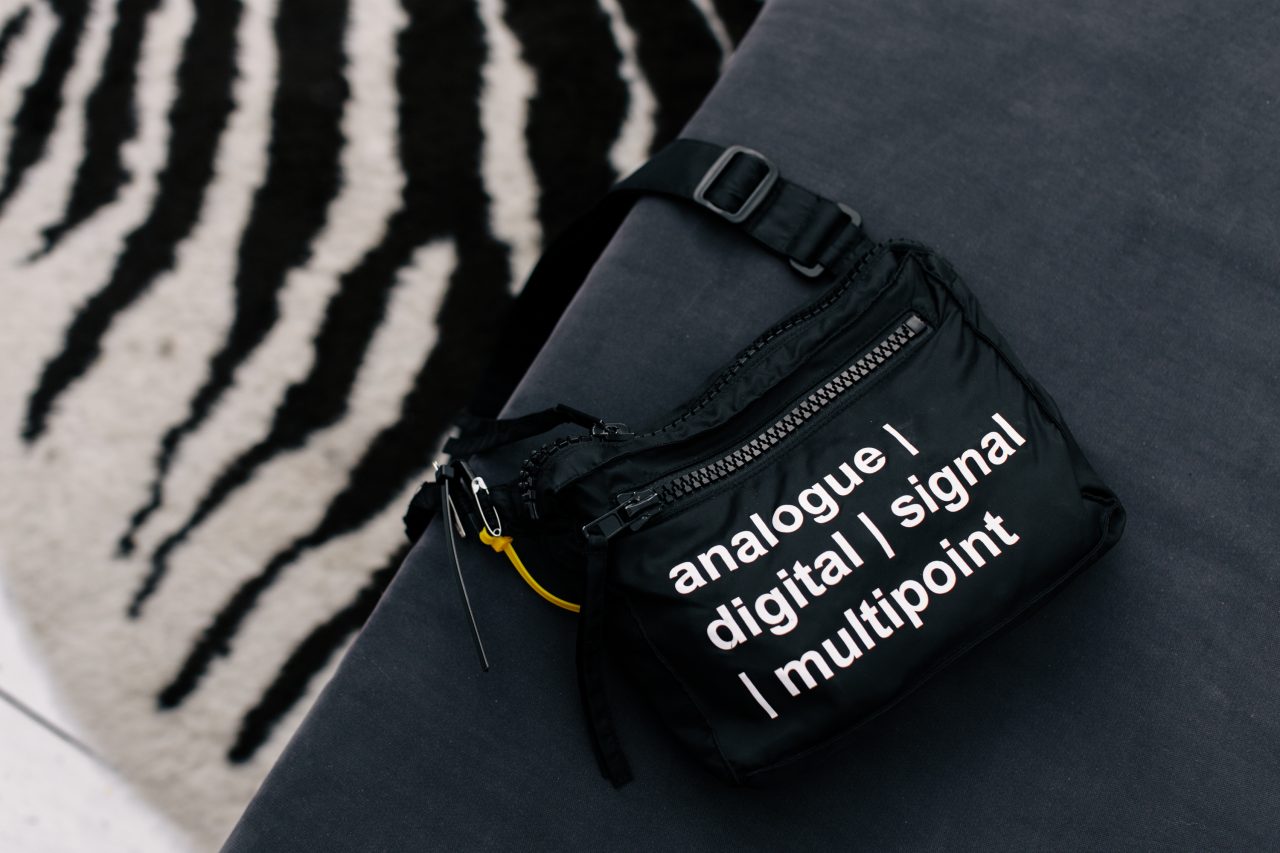
You studied ‘Sonic Art and Communications’, can you tell us more about this and how this has worked in to your career now?
Yes it was my reason to move to London – it was called the London College of Printing; back then and was in Clerkenwell by Hatton Gardens. I am not sure the campus exists anymore and I think the name has changed to The London College of Communications now.
I wasn’t sure what I wanted to do at that point to be honest, I just liked the vibe when I visited the campus and met the lecturers, it was extremely different to the other music courses and locations I had visited. There was a very practical element of what we learn’t there: such as, how to record sounds accurately and how to distort them and manipulate them. This is something I carry with me today from a mental perspective. Whenever I am looking at our TdT pieces I am thinking in this way: how can we change and distort certain elements. The course was also heavily concept-based in its teaching: we studied people like Stockhausen who I had never heard of but had all this amazing work to discover. I still think about my final graduation piece and how that effected the way I approached music production and later fashion.
Where do you see Tourne de Transmission in 5 years time?
If I can be putting out work that I enjoy, it has an audience and is consistent in its quality of message and content, I will be happy. Let’s see, it’s weird times right now in the world. Who knows what will be happening in the next 5 years. All I know is that it’s constant inspiration.
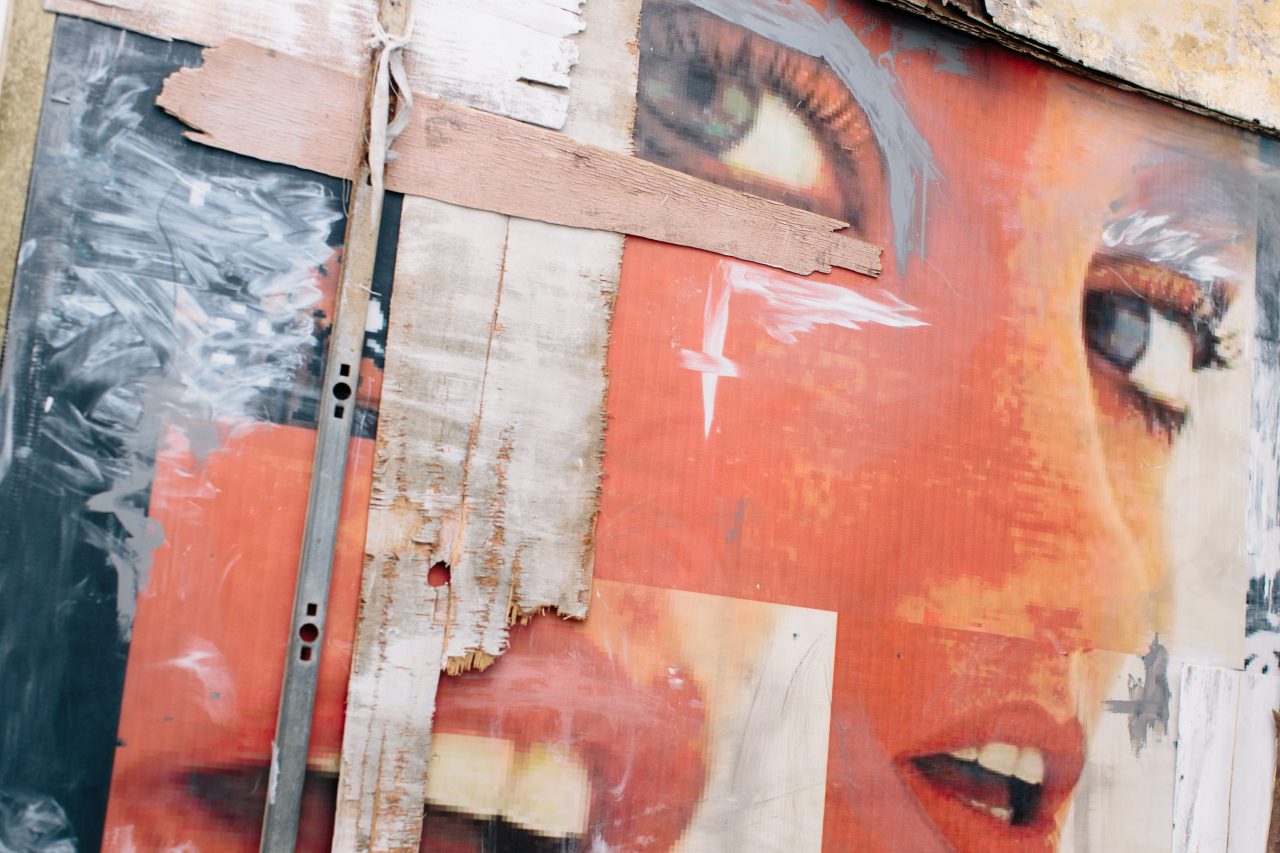
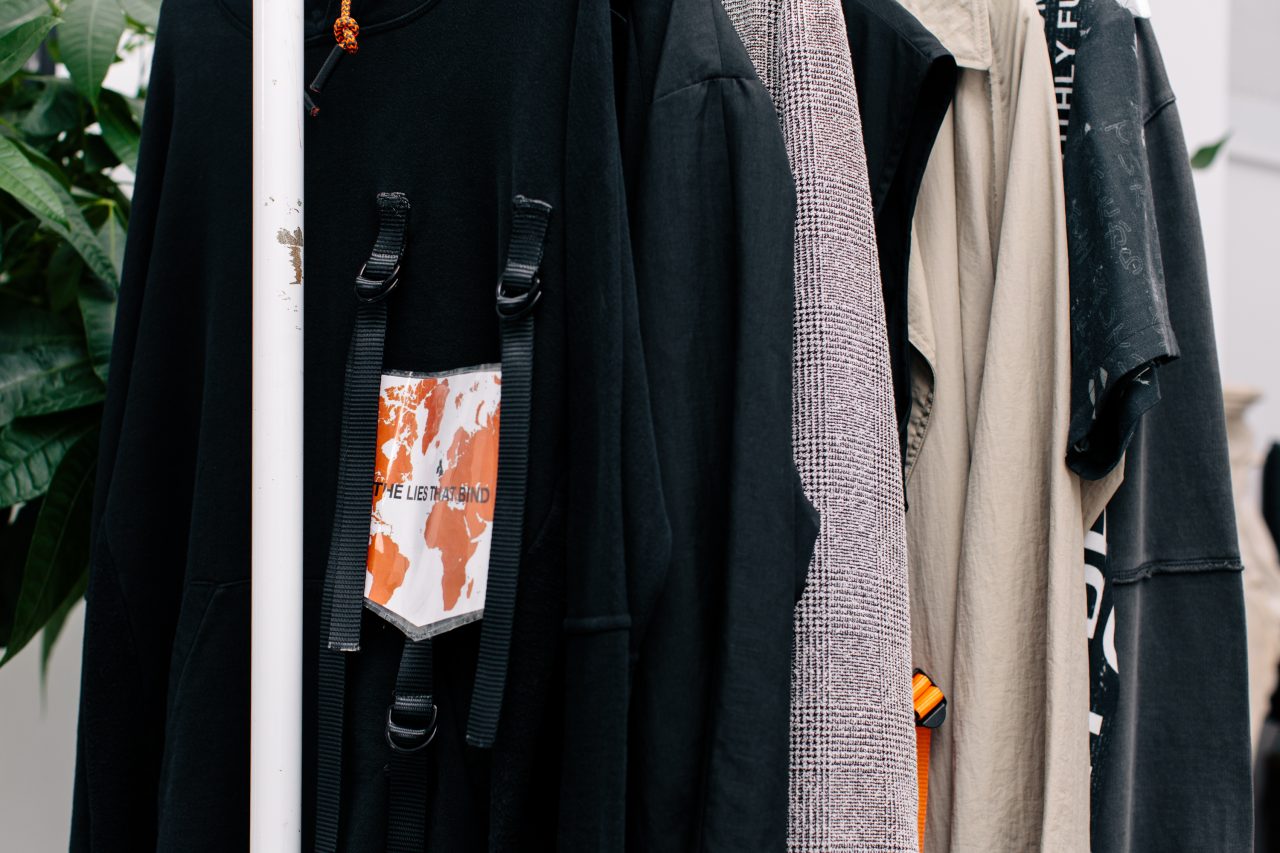
See the Tourne de Transmission SS18 debut runway show via their website:
















